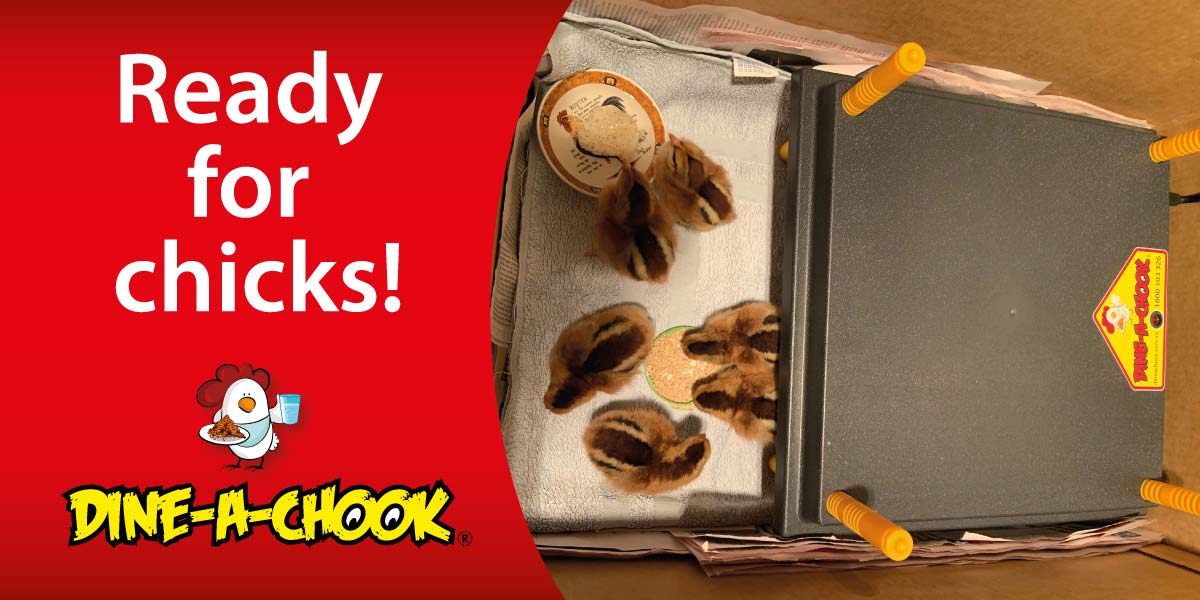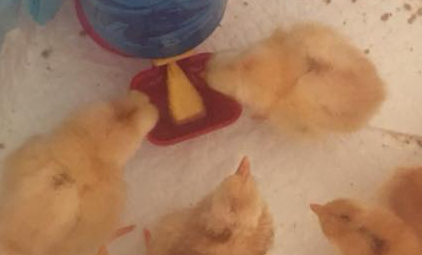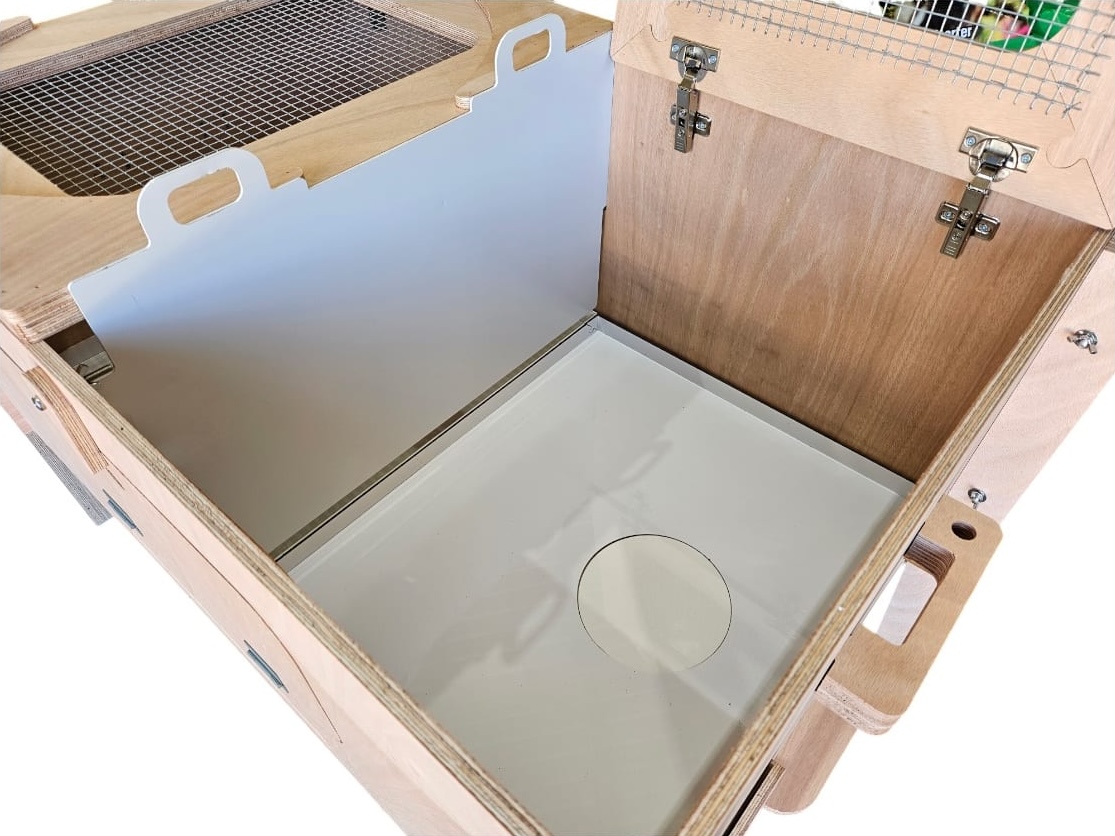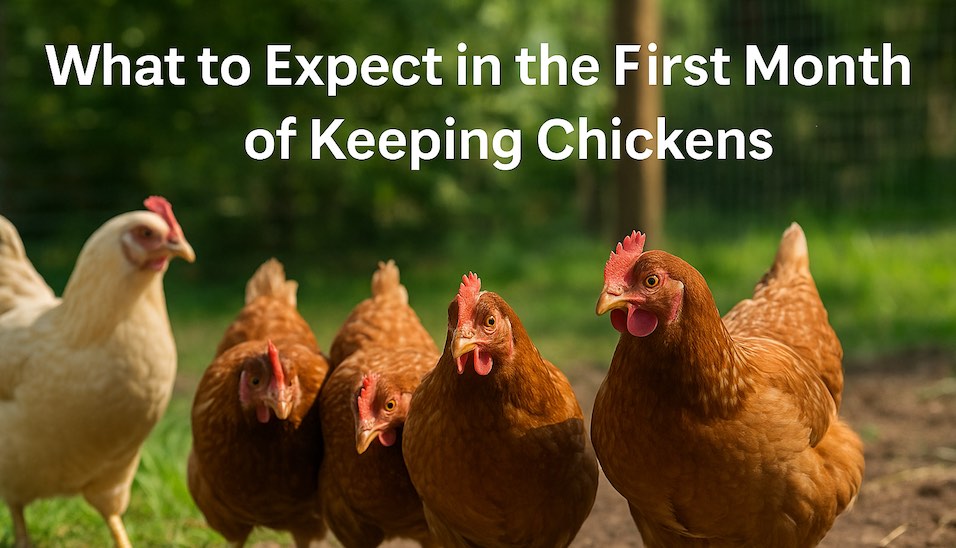Brooder Box - The Best Solutions for Raising Baby Chicks
Brooder Boxes - Everything You Need to Know
Once your chicks have hatched and completely dried off, they can be moved from the incubator into a chick brooder box.
A well-designed brooder is critical for raising healthy chicks. Without the right setup, young chicks can suffer from cold, stress, or even life-threatening conditions like spraddle leg and respiratory infections.
The Dine-A-Chook Premium Australian-Made Chick Brooder provides the perfect environment for your flock, offering safety, warmth, and convenience for both beginners and experienced chicken keepers. Pair it with our reliable range of brooder heat plates, designed to mimic the comfort of a mother hen and reduce the risk of overheating or fire hazards.
These tools make raising chicks easier and safer from day one. Get your brooder and heat plate today to give your chicks the best start in life.
What is a Chick Brooder?
A chick brooder is a special pen for chicks to grow in their first few weeks of life. Chicks need a special pen because they have specific requirements, like heat and shelter from draughts. If chicks are raised in an unsuitable brooder, it can lead to issues such as spraddle leg, coccidiosis, and respiratory infections.

What Can I Use as a Chick Brooder Box?
All sorts of containers can be used as a brooder box.
It all depends on how many chicks you have, where you are keeping them, the heat source you are using, and whether you want to reuse your brooder.
While you can use almost anything, here are some common brooder boxes for chicks:
- Cardboard boxes - These simple brooders can be upsized and replaced for free! But they can be dangerous when used with a heat lamp.
- Plastic crates - Easy to clean and available in many sizes, plastic crates are a durable brooder option.
- Storage containers - Why not upcycle a storage container, especially one that is missing the lid? These brooders are easy to clean and reusable.
- Small pens - Pens are often too draughty for small chicks, even when kept indoors. But they are a good option for larger chicks, for example when they are 3 or 4 weeks old.
- Playpens - Soft-sided mesh playpens are a good option for chicks kept indoors, but they can be difficult to clean unless they are machine washable. They can also be too draughty for small chicks and dangerous when used with a heat lamp.
- Sheds or sections of a shed - A cosy, draught-free shed can be a good chick brooder if it is sectioned to an appropriate size and kept warm.
- Fish tanks - Fish tanks are another reusable brooder that is suitable for a heat lamp.
Commercially-made brooders are also available, and while DIY options might suit many backyard breeders, investing in a purpose-built brooder like the Dine-A-Chook Premium Australian-Made Chick Brooder can make raising chicks simpler and safer. If you plan to raise chicks regularly, this high-quality option provides convenience and peace of mind that your flock has the best start.
What Size Should a Brooder Be?
Ideally, brooders should be cosier to begin with and become bigger as the chicks grow.
New chicks need about 15 cm of space each, and by the time the chicks are 4 weeks old, they should have double or triple that amount of room.
Regardless of the size of the brooder, chicks should always have room to move away from the heat source if they become too hot.
It is also important to avoid crowding.
For new chicks, a large brooder may be intimidating or prevent them from finding food and water. If the chicks wander away from the heat source, they may not be able to find their way back, especially at night, and large brooders are harder to heat effectively. If chicks become chilled, they can easily fall ill or die.
When chicks are older and more confident, a larger brooder is beneficial. Exploring provides amusement. When chicks have plenty of space, it can help prevent feather pecking, bullying, and other problems.
What Do Brooders Need?
Whatever you choose, there are a few things that brooders need to keep your chicks happy, healthy, and safe.
A Solid, Non-Slip Floor
Because chicks are so small, even something like cardboard, newspaper, wood, or plastic is too slippery for their tiny feet to grip. A slippery floor can cause spraddle leg, a deformity that is common in chicks.
Although spraddle leg is usually treatable, it is best to start out on the right foot with a non-slip brooder floor.
New chicks haven't yet learned to identify food. They can get sick if they eat their bedding, so a plain floor surface is important for the first few days.
Suitable brooder floors for new chicks include:
- Paper towel
- Old towels
- Carpet
- Astroturf
- Shelf liner
Once the chicks have learned to tell the difference between bedding and food, the brooder floor can be changed to:
- Wood shavings
- Shredded paper
- Chopped straw
- Sand
- Hemp bedding
All flooring should be cut to size, as chicks can easily become tangled and suffocate in folded materials such as towels and pillowcases.
Soiled flooring should be cleaned or disposed of to prevent illness. Wire floors are not recommended as they can damage delicate feet.
Protection from Draughts
Chicks are very sensitive to draughts and become sick easily if they aren’t protected, even when the weather is warm.
Solid-sided brooders are preferable for this reason, and brooders are best placed indoors.
Even when kept inside, brooders with mesh or wire sides can be too breezy for young chicks. If outdoors, brooders need to be wind-proof and rain-proof with solid sides.
Good Ventilation
Just like draughts can cause illness, so can poor ventilation.
Brooders need good ventilation to prevent humidity from forming and to allow any ammonia created by droppings to dissipate.
Keeping the brooder clean can also help prevent ammonia from causing respiratory problems.
High Sides
Open brooders are great when caring for chicks, but chicks will quickly learn to jump out if they can.
A roof or lid, even if it is just a towel or piece of cardboard, can be really useful. It keeps the chicks in and can also help conserve heat, particularly at night.
Be careful of overheating though!
A Heat Source
The traditional rule is to keep chicks at 32-35°C for the first week and decrease the temperature by 2-3°C each week after that.
However, chicks raised by a mother hen are not kept at exact temperatures. They will begin to explore the yard outside of their mother's feathers after a few days, even in cooler areas.
This tells us that as long as chicks are protected from draughts and have a reliable heat source when they want it, it is not necessary to keep them at exactly 32-35°C all the time.
There are many different heat sources available for brooders:
- Hot water bottles can be used but temperatures fluctuate a lot and they must be regularly refilled, even at night.
- Heating pads are another option for brooders, but they can pose a fire hazard and they often operate at temperatures that are too high for chicks.
- Heat lamps, or normal lights at a pinch, are the most traditional brooder heaters. Although they are warm, heat lamps can cause overheating more easily than hot water bottles or chick plates. They are also known for causing fires, making them a dangerous choice if you are not always at home. Some chicken keepers also dislike heat lamps because the chicks don't learn to sleep at night.
- Chick plates are a modern brooder heat source designed for the backyard chicken keeper. They provide radiant heat and are built so the chicks can huddle underneath them, just like they would with a mother hen. The main benefit of chick plates when compared with other options is their safety - they are not a fire hazard, unlike heat lamps, and they are less likely to cause overheating as the radiant heat is easy to avoid unlike heaters which warm the air in the brooder.
Regardless of the heat source chosen, chicks should always be able to move away from it if they become too warm.
Feeders and Drinkers
Having the right feeders and drinkers in your brooder is essential to keep your chicks healthy and hydrated. Compact and durable, the Dine-A-Chook Small 3.5 Litre Feeder and the Dine-A-Chook Small Lubing Cup Drinker are perfect for brooder boxes. Their size ensures they fit comfortably in smaller spaces, while their design prevents spills and waste, keeping the brooder clean and tidy.

If you choose our Premium Australian-Made Chick Brooder, it even includes the drinker as part of the package, making it an all-in-one solution for your flock.
For more tips on feeding your chicks, check out our Complete Guide to Feeding Baby Chickens. This guide covers everything you need to know about providing the best nutrition for your growing flock.
How to Keep Brooders Clean
Brooders should always be kept clean.
Dirty conditions, in particular contaminated feed and water, can cause illnesses including coccidiosis, which is often fatal for chicks. Bedding should be replaced regularly as wet or dirty bedding can produce ammonia and promote respiratory illnesses.
If you are using a brooder for multiple batches of chicks, it should always be cleaned thoroughly and then sanitised in order to prevent the spread of disease.
We recommend Vetsense COOP Clean as the best cleaning and sanitising spray for cleaning the brooder.

We’ve designed our chick brooders with easy cleaning in mind by including a removable divider panel. This feature allows you to keep the chicks on one side while cleaning the other, making maintenance quick and stress-free for you and your flock.
How Long Should Chicks Stay in a Brooder?
Although it varies, chicks should stay in a brooder for around 6 weeks or until they develop adult feathers. Once the chicks are 3 or 4 weeks old, they can be allowed to leave the brooder during warm weather.
Putting a playpen on the grass on a warm day can be a great way to let chicks explore and sun themselves. Some chicken keepers move their chicks from a brooder to a small pen or coop after 5 or 6 weeks, providing a small heat source at night and allowing the chicks to roam during the day.
Do you have more questions about raising chicks? You may like these other blog articles:
- How to treat spraddle leg in chicks
- Introducing new chickens to the flock
- Complete guide to feeding baby chickens
Happy hatching!
Rachael at Dine-A-Chook Australia




